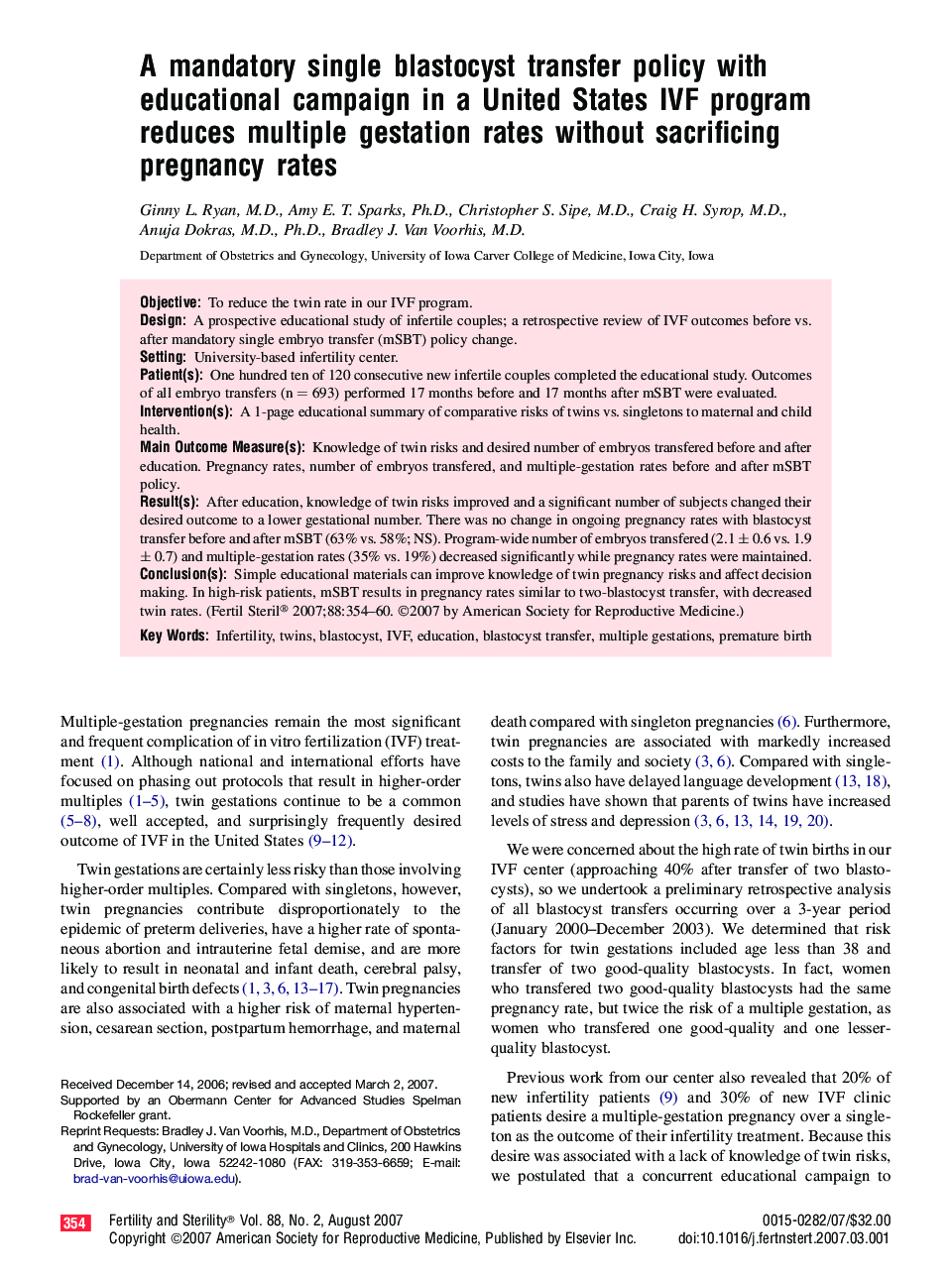| Article ID | Journal | Published Year | Pages | File Type |
|---|---|---|---|---|
| 3935498 | Fertility and Sterility | 2007 | 7 Pages |
ObjectiveTo reduce the twin rate in our IVF program.DesignA prospective educational study of infertile couples; a retrospective review of IVF outcomes before vs. after mandatory single embryo transfer (mSBT) policy change.SettingUniversity-based infertility center.Patient(s)One hundred ten of 120 consecutive new infertile couples completed the educational study. Outcomes of all embryo transfers (n = 693) performed 17 months before and 17 months after mSBT were evaluated.Intervention(s)A 1-page educational summary of comparative risks of twins vs. singletons to maternal and child health.Main Outcome Measure(s)Knowledge of twin risks and desired number of embryos transfered before and after education. Pregnancy rates, number of embryos transfered, and multiple-gestation rates before and after mSBT policy.Result(s)After education, knowledge of twin risks improved and a significant number of subjects changed their desired outcome to a lower gestational number. There was no change in ongoing pregnancy rates with blastocyst transfer before and after mSBT (63% vs. 58%; NS). Program-wide number of embryos transfered (2.1 ± 0.6 vs. 1.9 ± 0.7) and multiple-gestation rates (35% vs. 19%) decreased significantly while pregnancy rates were maintained.Conclusion(s)Simple educational materials can improve knowledge of twin pregnancy risks and affect decision making. In high-risk patients, mSBT results in pregnancy rates similar to two-blastocyst transfer, with decreased twin rates.
